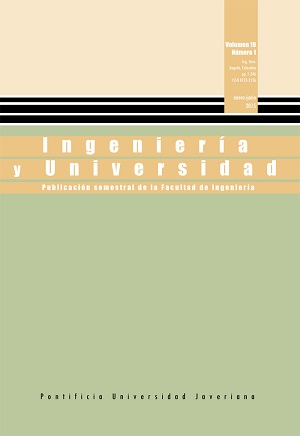Abstract
This article presents the development of a software tool forthe practice on virtual robotic surgery. The tool is calledRoboSurgery and it was designed for engineers that needtraining on how to use laparoscopic surgical robots. Thetool contains two types of robots: an endoscopic holderrobot (Hibou robot), and two surgical robots (LapBot robot),all of them handled by joystick. The system allowsthe observation of the inside of the abdominal cavity of thepatient by a virtual image generated by the endoscopicholder camera, while the two surgical robots work ona virtual cholecystectomy (removal of the gallbladder).Results show a useful system to help understand theoperation of laparoscopic robot-assisted procedures, accordingto the evaluation made by a group of studentsand teachers. In the future this tool could include moresurgical robots and more surgical procedures, as well asmore realism including body deformation algorithms.
[2] M. Jacobs, M. Gagner y J. Cueto-García, Laparoscopic surgery. New York: McGraw-Hill, 2003.
[3] N. Katkhouda, Advanced laparoscopic surgery: Techniques and tips. New York: Springer, 2010.
[4] R. Mishra, S. Wexner y R. Green, Textbook of practical laparoscopy surgery. New Delhi: Jaypee Brothers Medical Publishers, 2013.
[5] S. Kommu, P. Rimington, C. Anderson, et al., “Initial experience with the EndoAssist camera-holding robot in laparoscopic urological surgery”, Journal Robotic Surgery, vol. 11, pp. 133-137, 2007.
[6] B. Kraft et al., “The Aesop robot system in laparoscopic surgery: increased risk or advantage for surgeon and patient?”, Surgical Endoscopy, vol. 18, pp. 1216-1223, 2004.
[7] R. Polet y J. Donnez, “Using a laparoscope manipulator (Lapman) in laparoscopic gynecological surgery”, Surgical Technology International, vol. 17, pp. 187-191, 2008.
[8] J. Marescaux y F. Rubino, “The Zeus robotic system: experimental and clinical applications”, Surgical Clinics North America, vol. 83, pp. 1305-1345, 2003.
[9] R. Smith y M. Truong, Simulation in robotic surgery: a comparative review of simulators of the da Vinci surgical robot. Oviedo, FLA: Modelbenders Press, 2013.
[10] C. Vaessen, “Location of robotic surgical systems worldwide and in France”, Journal Visceral Surgery, vol. 148, pp. 9-11, 2011.
[11] S. Salinas y A. Vivas, “Modelado, simulación y control del robot para cirugía laparoscópica LapBot”, Revista Chilena Ingeniería, vol. 17, pp. 317-328, 2009.
[12] V. Torres et al., “Diseño y simulación en 3D de un robot porta endoscopio para operaciones de laparoscopia”, en V Seminario Internacional de Ingeniería Electrónica, Bucaramanga, Colombia, septiembre 2011.
[13] E. Dombre y W. Khalil, Modeling, performance analysis and control of robot manipulators. Londres: Wiley, 2010
[14] Z. Wang, Z. Sun y S. Jay, “Haptic feedback and control of a flexible surgical endoscopic robot”, Computer Methods Programs Biomedicine, vol. 112, pp. 260-271, 2013.
[15] A. Stoica et al., “Kinematic, workspace and singularity analysis of a new parallel robot used in minimally invasive surgery”, Frontiers Mechanical Engineering, vol. 8, pp. 70-79, 2013.
[16] W. Khalil y J. F. Kleinfinger, “A new geometric notation for open and closed loop robots”, en Proceedings IEEE Conference on Robotics and Automation, San Francisco, USA, april 1986.
[17] W. Khalil y D. Creusot, “Symoro+: A system for the symbolic modelling of robots”, Robotica, vol. 15, pp. 153-161, 1997.
[18] A. Vivas, Diseño y control de robots industriales: Teoría y práctica. Buenos Aires: Elaleph, 2010.
[19] J. Lenarcic, T. Bajd y M. Stanisic, Robot mechanisms (Intelligent systems, control and automation: science and engineering). New York: Springer, 2014.
[20] L. Swanstrom y N. Soper, Master of endoscopic and laparoscopy surgery, 4ta. ed. Philadelphia: Lippicont Williams & Wilkins, 2013.
[21] F. Agresta, F. Campanile y N. Vettoretto, Laparoscopic cholecystectomy: An evidence-based guide. Dordrecht: Springer, 2014.
[22] P. Dias, J. Madeira y B. Sousa, “Teaching 3D modelling and visualization using VTK”, Computer & Graphics, vol. 32, pp. 363-370, 2008.
[23] C. Zhang et al, “A robotic manipulator control and simulation system with Qt and VTK”, Advanced Materials Research, vol. 462, pp. 712-719, 2012.
[24] D. Guzmán, “Herramienta software para la práctica y experimentación de la robótica quirúrgica”, Tesis de pregrado, Universidad del Cauca, Popayán, Colombia, 2013.
This journal is registered under a Creative Commons Attribution 4.0 International Public License. Thus, this work may be reproduced, distributed, and publicly shared in digital format, as long as the names of the authors and Pontificia Universidad Javeriana are acknowledged. Others are allowed to quote, adapt, transform, auto-archive, republish, and create based on this material, for any purpose (even commercial ones), provided the authorship is duly acknowledged, a link to the original work is provided, and it is specified if changes have been made. Pontificia Universidad Javeriana does not hold the rights of published works and the authors are solely responsible for the contents of their works; they keep the moral, intellectual, privacy, and publicity rights.
Approving the intervention of the work (review, copy-editing, translation, layout) and the following outreach, are granted through an use license and not through an assignment of rights. This means the journal and Pontificia Universidad Javeriana cannot be held responsible for any ethical malpractice by the authors. As a consequence of the protection granted by the use license, the journal is not required to publish recantations or modify information already published, unless the errata stems from the editorial management process. Publishing contents in this journal does not generate royalties for contributors.


